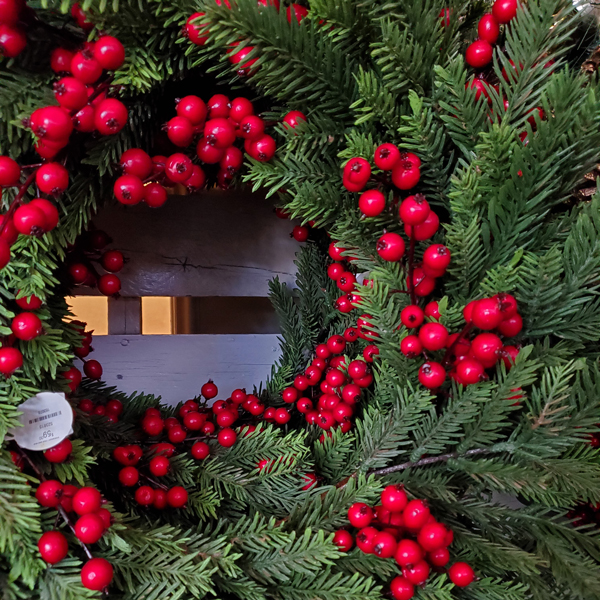
With the holiday season upon us, our human spirit develops a longing for comfort and reassurance, particularly this year with all the challenges we face. Perhaps it’s a response to the shorter days with diminishing levels of daylight, or the anticipation of those cold windy days inevitably looming. Whatever the reason, bringing some of nature into our homes to enjoy up close at this time of year has been a comfort and tradition since ancient times.
The softer “harvest” colors of orange-red, buff, and yellow, typical as autumn gradually draws to a close, transform to brighter reds and greens as the winter season sets in. Many families display wreaths and sprays of greens, along with colorful branches and berries, tied together with a brightly colored bow. Commercially available wreaths are built on a background like balsam fir with various sprigs and twigs added for variation.
Add appeal by customizing your wreath using twigs from some of the plants around your yard that look attractive at this season: holly, brightly-colored cypress, Japanese umbrella pine (Sciadopitys) and andromeda are good choices. Also try juniper berries, Japanese silver grass (Miscanthus) tassels, colorful dogwood stems, hydrangea flower heads, milkweed, teasel and sweetgum (Liquidambar) seed pods.
When you choose natural decorations, please avoid using oriental bittersweet (Celastrus orbiculatus) and Japanese rose (R. multiflora) in your arrangements. Although these have visually attractive fruit, the seed from these plants germinates readily and the plants resulting can be a problem for years to come.
An imaginative option is a “winter wreath” which maintains its attractiveness throughout the holidays and well beyond. This can be made by packing moist sphagnum moss into a wire form and tightly wrapping it with plastic to retain moisture. Sprigs of greens inserted into the frame take up the moisture, retaining their colors and turgidity for much longer than dry wreaths. Displayed outdoors on a wall or entryway these look attractive all winter because cold weather helps keep them from drying out.
There is no more traditional holiday choice than holly. Many types of holly grow well in this climate including the evergreen American holly (Ilex opaca) and the “blue hollies” (Ilex x meserveae hybrids), and the deciduous winterberry (Ilex verticillata) with its many cultivars. The evergreen hollies are typically popular at this season because of their sharp, glossy green leaves and brilliant red berries. If your evergreen holly branches are sparsely fruited, try bunching them with sprigs of the deciduous hollies. All hollies last longest when their stems are kept wet, but even when used dry they remain attractive for weeks outdoors, and about a week or more indoors.
As an alternative to the traditional cut tree, many families have established a family tradition of planting a living holiday tree to serve as a reminder of the year’s events. An economical and ecologically-correct option, your living tree becomes a time-marker as your family grows. Now is the right time to visit your local garden center to view the types of living trees available, and understand the preparations needed to assure your family will enjoy this investment for years to come.
For inspiration and ideas on using natural items for decorating, plan on attending the Massachusetts Horticultural Society’s Festival of Trees at the Elm Bank Reservation in Wellesley. And over the winter, as you plan for next year’s gardens, consider adding plants that enhance your holiday enjoyment as a bonus benefit for your family.







